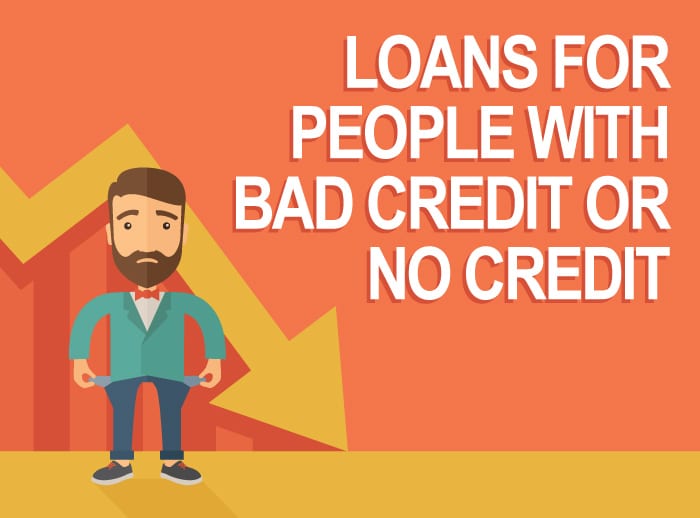Getting a loan when your credit score is bruised can feel like trying to walk through a locked door. Rejections pile up. Interest rates soar. And options start to look more like traps than solutions.
But having poor credit doesn’t mean you’re out of moves—it just means you’ll need to play the game smarter. Whether you’re dealing with unpaid defaults, late payments, or a limited credit history, there are ways to access the funds you need without falling into a worse financial position.
Let’s break it down.
What is Poor Credit?
“Poor credit” isn’t one-size-fits-all. It could mean:
- You’ve defaulted on loans or bills in the past
- You have multiple missed or late repayments
- You’ve applied for too many loans or credit cards in a short time
- You simply don’t have much credit history
Each of the major credit reporting agencies—Equifax, Experian, and Illion—uses different scoring models, but typically a score below 500 is considered “below average” or “poor.” And even if your number looks better than that, some lenders dig deeper into your actual repayment behaviour, not just the headline score.
The good news is that a low score isn’t permanent. But before we talk repairs, let’s deal with the now: what to do when you need a loan, urgently or otherwise.
Option 1: Approach Non-Bank Lenders (Cautiously)
Traditional banks tend to be conservative. If your credit report throws up red flags, it’s often a flat “no.” That’s where non-bank lenders come in—online lenders, digital finance platforms, and peer-to-peer services like:
- Nimble
- MoneyMe
- Plenti
- Now Finance
Some of these providers are more flexible about credit scores. What they often look for instead is:
- Stable income (even from Centrelink in some cases)
- Responsible banking behaviour
- Minimal existing debt
But here’s the catch: the interest rates can be steep, and fees can stack up if you’re not careful. Always read the fine print and compare using tools like MoneySmart’s personal loan calculator or Canstar’s loan comparison tables.
Option 2: Consider a Guarantor Loan
If someone you trust (and who trusts you back) is willing to guarantee your loan—usually a parent, sibling, or partner—you may be able to access lower interest rates even with a low score.
But it’s not a free ride. A guarantor is legally responsible if you default. That means if you miss repayments, their credit rating and assets are on the line. It’s a powerful option, but one that should come with open conversations, legal clarity, and preferably written agreements outside of the loan terms themselves.
Option 3: Use an Asset as Security
Do you have a car, property, or another valuable asset? You might qualify for a secured personal loan, where the asset backs the lender in case you can’t repay. Lenders are often more flexible when they know there’s something they can reclaim. And the interest rates are usually lower than unsecured loans, especially if your asset is relatively new or well-maintained.
But know that you can lose the asset if you fall behind. This isn’t a loophole; it’s a legal arrangement.
Option 4: Borrow Smaller Amounts with Shorter Terms
Instead of shooting for a $15,000 loan, consider scaling down. Some lenders offer small personal loans—$2,000 or less—even to borrowers with poor credit, particularly if you’ve got a stable income. These are sometimes called ‘bad credit loans’, and while the name sounds harsh, they can be a stepping stone if managed well.
Look at lenders like:
- Wallet Wizard
- Fair Go Finance
- Sunshine Loans
Be mindful of fees though. Under the National Consumer Credit Protection Act, loans under $2,000 can carry establishment fees of up to 20%, plus monthly fees of 4%, making the cost-per-dollar high if you drag the loan out.
Option 5: Fix What You Can Before You Apply
If your loan isn’t urgently time-sensitive—say, you’re planning a car purchase or consolidating debts—then hit pause and tidy up what you can first.
Here’s what has the biggest impact on credit repair:
- Pay off defaults. Even if they remain on your report, marked as “paid” is better than “outstanding”
- Avoid new credit applications: Wait at least 6–12 months before applying again
- Bring overdue accounts up to date: Repayment history now appears in reports under Comprehensive Credit Reporting
- Dispute errors. Wrong account details? Duplicate debts? Lodge a correction request with the credit bureau directly
This isn’t a magic fix, but even a slight improvement in your score—or clearing a default—can unlock more loan options with better terms.
What to Avoid at All Costs
Let’s be blunt: some lenders are predatory. They prey on people who are financially cornered and desperate.
Steer clear of:
- Payday lenders offering cash with flashy ads and fast approvals (these can charge APR rates above 400%)
- Loan brokers who demand upfront fees before any approval
- Unlicensed operators that don’t appear on ASIC’s credit license register
If it looks too easy, too fast, or too good to be true—it probably is.
Consider Credit Alternatives
If a personal loan is out of reach or too expensive, consider:
- No Interest Loan Scheme (NILS): Run by Good Shepherd, this offers up to $2,000 for essentials like appliances, car repairs, or medical bills—no fees, no interest
- Centrelink Advance Payments: If you receive benefits, you may qualify for a lump-sum advance on your payments
- Borrowing from your future savings via a salary advance through your employer or services like Beforepay (just use with discipline)
Bottom Line: Poor Credit Doesn’t Mean No Options
Needing a loan with bad credit doesn’t make you irresponsible—it makes you human. Life happens: illness, job loss, financial missteps. But it’s how you manage the next step that counts.
Look beyond flashy offers. Compare options carefully. Tidy up your report if possible. And above all—borrow for the right reasons, with a clear plan to repay. Because the ultimate goal isn’t just to get the loan. It’s to use it to build something better.

